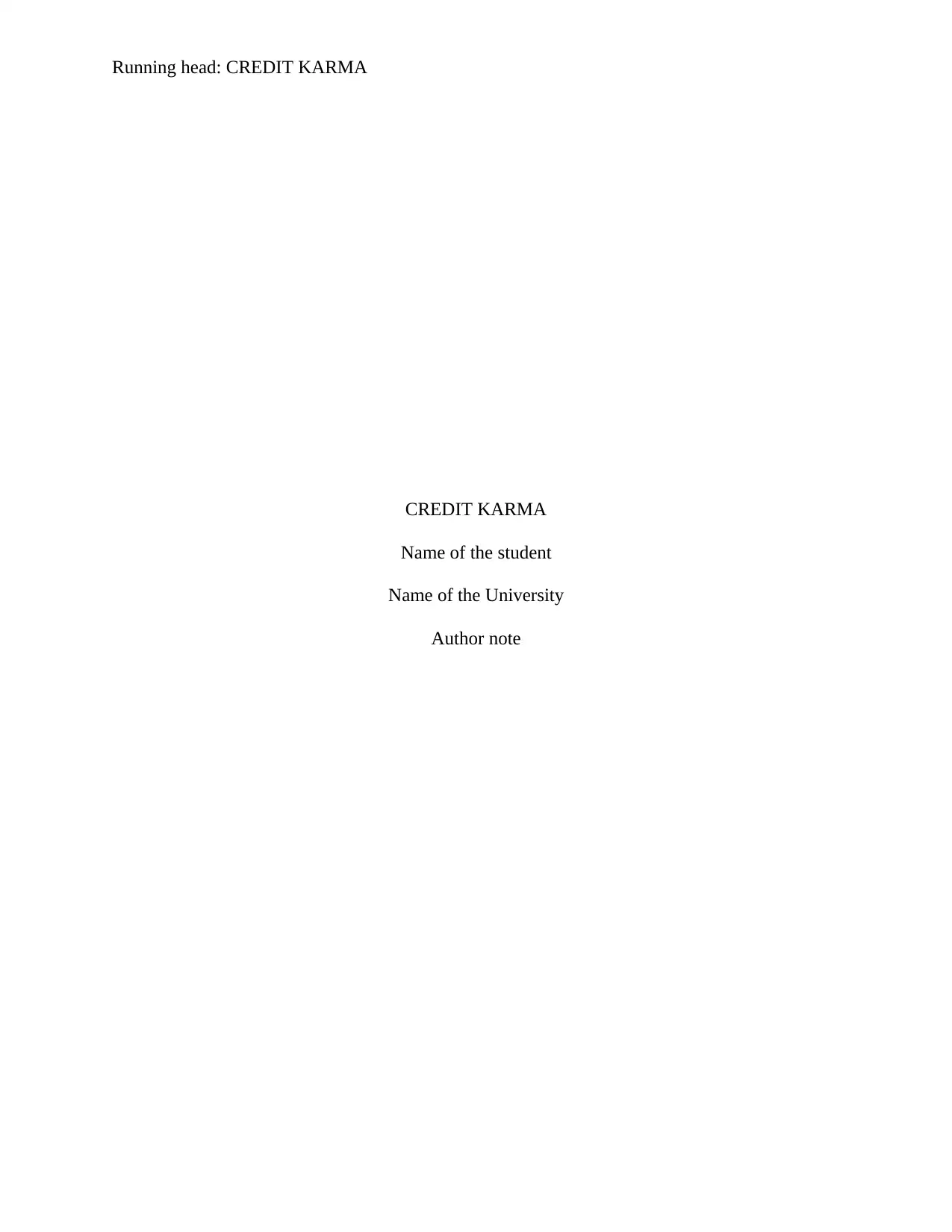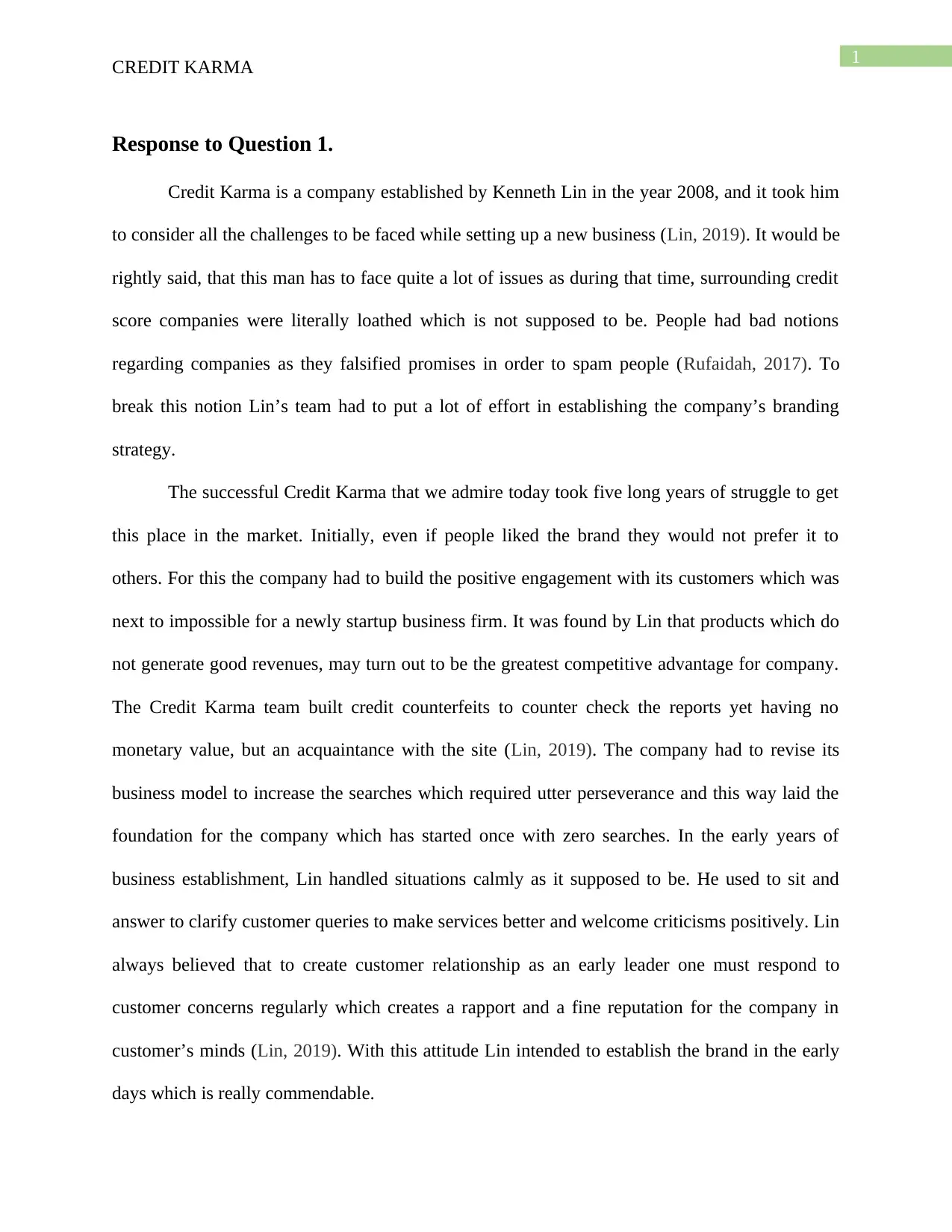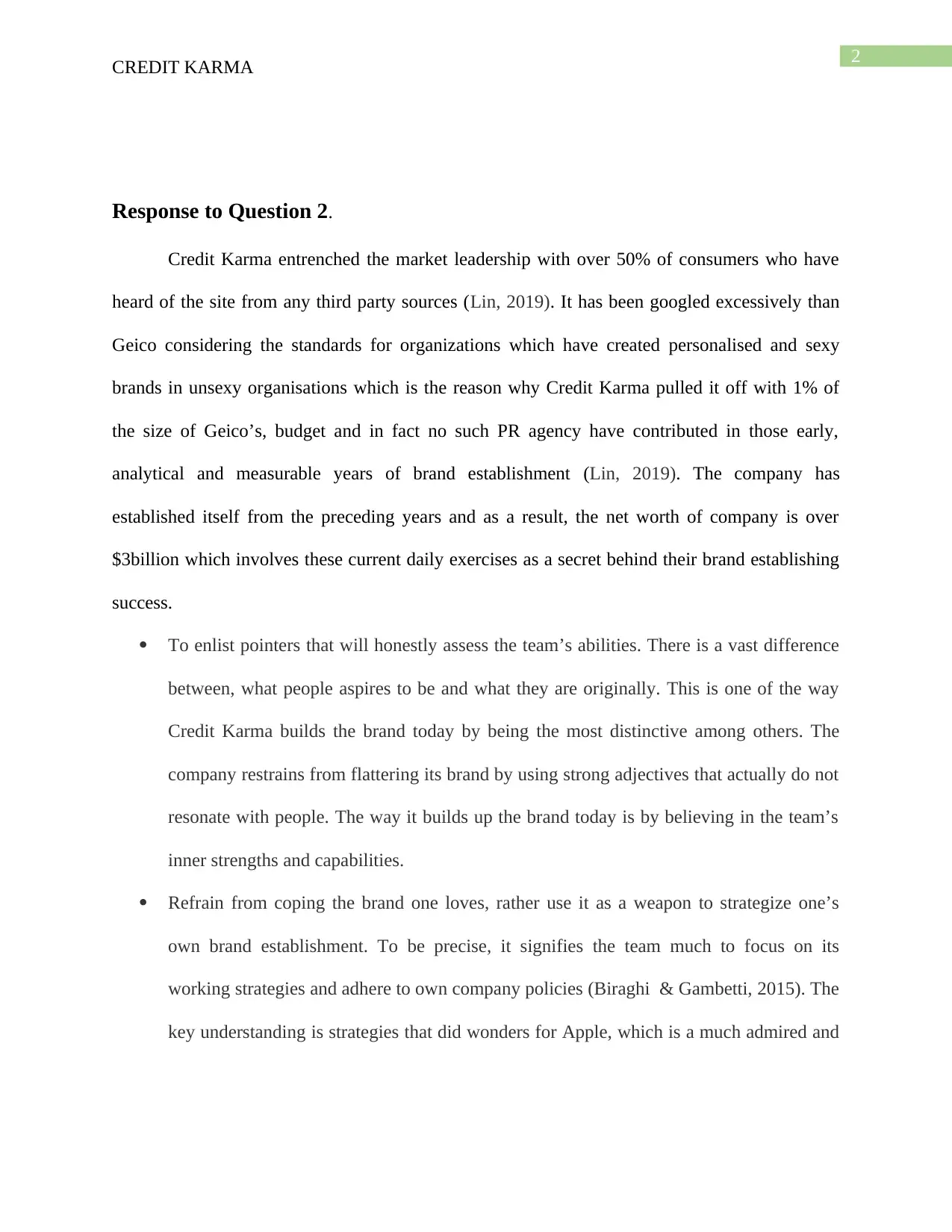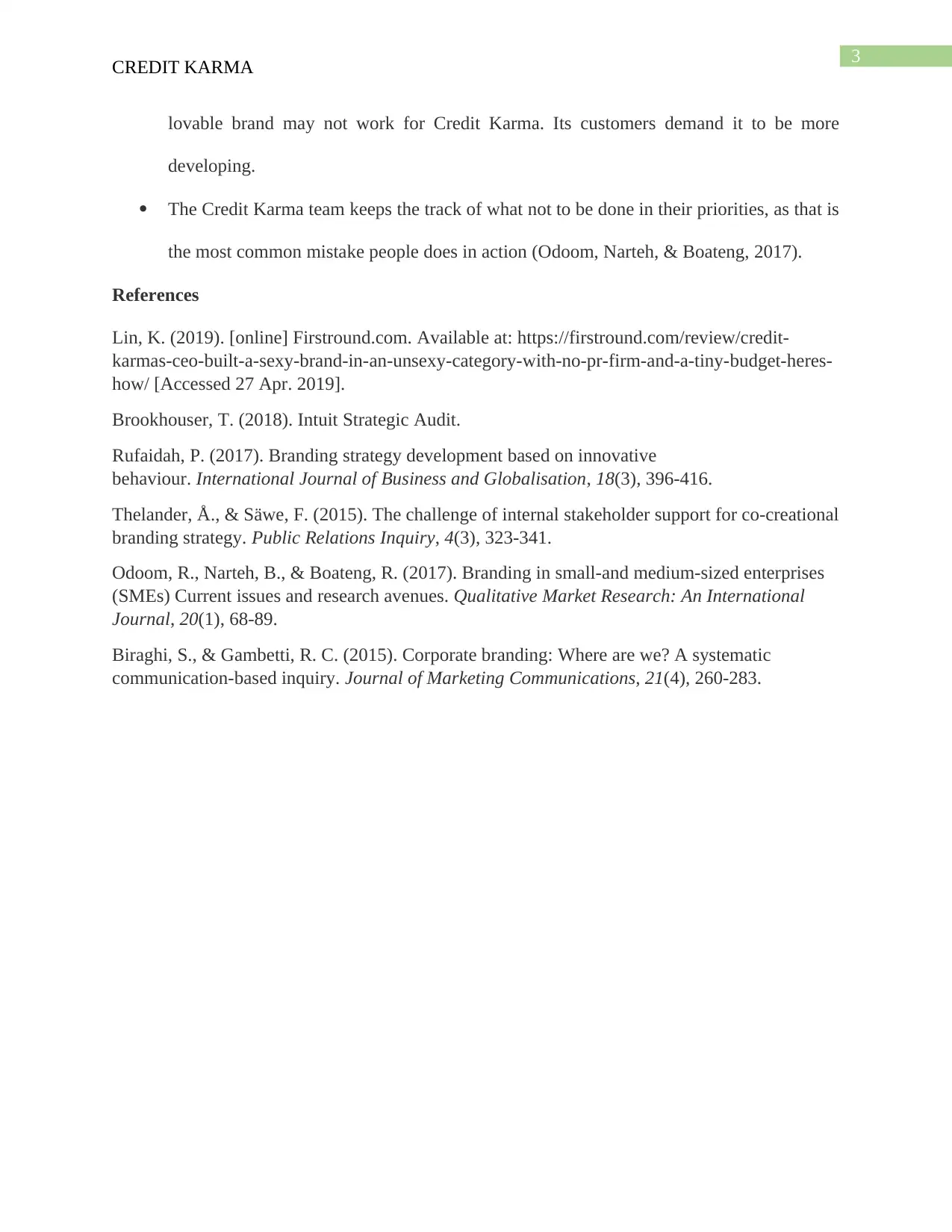Analyzing Credit Karma's Brand Strategy: A Business Case Study
VerifiedAdded on 2023/04/22
|4
|941
|165
Case Study
AI Summary
This case study delves into the establishment and success of Credit Karma, founded by Kenneth Lin in 2008. It highlights the challenges faced in building a brand in an industry initially viewed with skepticism. The company focused on creating positive customer engagement and leveraging non-revenue generating products to build trust and familiarity. Lin's hands-on approach to customer service and willingness to address concerns played a crucial role in establishing a strong brand reputation. The case study further explores Credit Karma's market leadership, achieved with a relatively small budget compared to competitors, emphasizing the importance of understanding team capabilities, avoiding direct brand imitation, and prioritizing what not to do. The analysis reveals key strategies that contributed to Credit Karma's $3 billion net worth and its position as a leader in its sector. Desklib provides this case study and other solved assignments for students.
1 out of 4











![[object Object]](/_next/static/media/star-bottom.7253800d.svg)